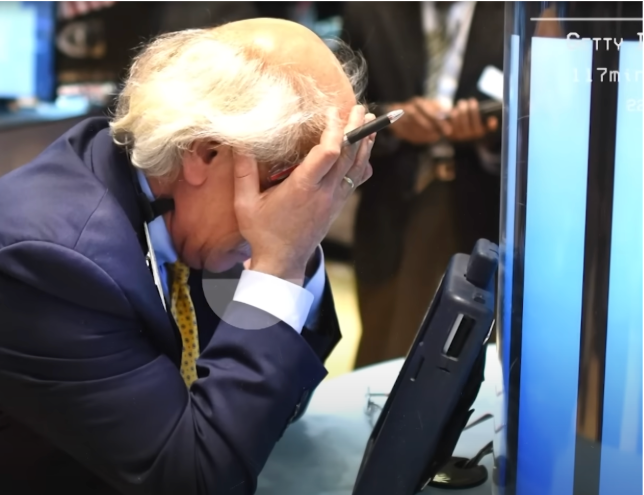News
Trump’s Mother-of-All Tariff Announcements Trigger Stock Selloffs

Source: YouTube
President Donald Trump’s announcement of sweeping tariffs sent financial markets into a tailspin today. The new trade policy imposes a minimum 10 percent tariff on all U.S. imports, with significantly steeper rates on key partners such as 34 percent on China, 46 percent on Vietnam, and 49 percent on Cambodia. The reaction was immediate. Stocks tied to global manufacturing plunged as investors rushed to reassess supply chain risk and pricing pressure.
All three major U.S. indices closed deep in the red. Dow Jones Industrial Average futures dropped by 2.7 percent, falling from 41,000 to roughly 39,900. S&P 500 futures declined by 3.9 percent, and Nasdaq 100 futures dropped by 4.7 percent. The selloff extended into after-hours trading, as traders priced in both immediate profit hits and long-term shifts in production strategy.
Sector Selloffs: From Tech to Retail
The biggest losers were companies with heavy exposure to overseas manufacturing, especially in countries directly hit by the new tariffs.
- Apple (AAPL) dropped 7 percent from $240.00 to $223.89. Its production relies heavily on China and Vietnam, both of which face punishing import duties.
- Nike (NKE) fell 6 percent from $69.00 to $64.96. Nearly half its shoes are made in Vietnam, which now carries a 46 percent tariff.
- Tesla (TSLA) declined by 5 percent from $297.00 to $282.76. The automaker’s dependence on Chinese battery components is now a major concern.
- General Motors (GM) slid 4 percent from $44.10 to $42.33, while Ford (F) fell 3.5 percent from $13.20 to $12.74. Both rely on global supply chains that are now facing higher costs.
Retailers like Walmart and Target also took hits. Though not as dramatic as tech or auto losses, both stocks slipped over 2 percent as analysts flagged likely increases in consumer goods prices due to costlier imports.
Industry-Wide Fallout, Beyond Consumer Brands
Other sectors aren’t safe either. Agriculture faces potential retaliation from major trade partners like China, which may slash purchases of American crops and meat. That puts added pressure on rural economies already dealing with tight margins.
Manufacturing firms reliant on imported steel, aluminum, and other raw materials also dropped, with analysts warning of tighter profit spreads and possible job cuts. Given their dependence on Southeast Asian assembly and parts sourcing, mid-tier electronics manufacturers experienced stock declines as well.
Pockets of Resilience and Strategic Advantage
Not every sector suffered. Pharmaceuticals held steady, as the administration confirmed that medical devices and prescription drugs would be excluded from the new tariffs. Stocks like Eli Lilly and Johnson & Johnson ended flat, offering rare stability in an otherwise red session.
Mining and lumber stocks rose slightly, supported by the administration’s claim that the tariffs aim to counter years of foreign dumping. These sectors could benefit if U.S.-based production becomes more attractive in the months ahead.
Domestic-focused firms, especially in utilities, regional retail, and construction, are outperforming the broader market. These companies have minimal exposure to international supply chains and are now seen as defensive positions amid rising global friction.
React Quickly, Invest Deliberately
The speed of today’s selloffs signals a shift in market psychology. This isn’t just a temporary dip—it’s a reevaluation of business models built on cheap, global production. Investors are already rotating into companies with domestic operations and fewer tariff-linked risks.
While panic selling may tempt some, seasoned investors look for ways to protect capital without abandoning long-term strategies. The next earnings season will be critical. It will reveal which companies can absorb new costs, and which ones will pass them to consumers or bleed margin trying not to.
How are you adjusting your investment strategy in response to the new tariffs?




1 Comment
It looks like it’s time to hold for 3 1/2 more years minimum…